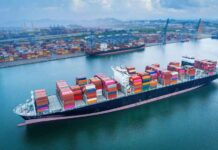Because of the combination of technical developments, geopolitical upheavals, and extraordinary disruptions, the landscape of supply chains is experiencing deep modifications in the complex network of global trade. These transitions are being molded by a convergence of these factors. In order to successfully navigate these issues, firms that are attempting to preserve a competitive edge in this linked world need to have strategic vision, resilience, and new ways.
Impact of Recent Disruptions on the Situation
The recent interruptions that have occurred in vital trade routes, such as those in the Red Sea, have brought to light a wide variety of difficulties for supply chains all, worldwide. The decrease in shipping capacity, in conjunction with imbalances in supply and demand, has resulted in an increase in freight rates, which has brought about an intensification of the financial difficulties that are already being experienced by enterprises that are dealing with the aftermath of geopolitical conflicts. Additionally, delays in the return of equipment and interruptions in the repositioning of containers have contributed to the worsening of shortages in critical locations, which has created logistical challenges for companies that are dependent on these most important routes.
Trade policy, consumer confidence, infrastructure investments, and the dynamics of global supply chains are all going to be impacted by major elections in crucial economic powerhouses such as the United States of America, India, Brazil, Germany, Russia, and Japan. Geopolitical issues add another layer of complexity to the situation, making it even more difficult to understand what is going on. As a result of the fact that these instances bring to light the inherent volatility that is present in the current atmosphere of global commerce, businesses all over the world are obliged to implement strategies that are both inventive and adaptable.
Implementing Strategies to Improve the Resilience of Supply Chains
1. Data Insights and Advanced Analytical Capabilities
Utilizing the power of sophisticated analytics and insights produced by data is the first step in improving the supply chain’s resilience in response to these problems. Businesses have the ability to obtain significant insights into market trends, operational inefficiencies, and possible dangers by using historical data in conjunction with real-time information. This proactive strategy promotes informed decision-making, which in turn helps businesses to improve supply chain operations and reduce disruptions before they become more severe.
2. Detection, Response, and Recovery in a Rapid Manner
The early identification of disruptions and the implementation of rapid reaction mechanisms are impossible without the presence of robust monitoring systems and real-time tracking. Because of these capabilities, firms are able to quickly detect operational bottlenecks, redirect goods as required, and preserve continuity in the face of unanticipated occurrences. Not only can efficient response techniques reduce the amount of time that a company is down, but they also improve the firm’s agility, which enables organizations to deal with disruptions with more resilience.
3. Make the transition from Just-in-Time to Just-in-Case
As an illustration of a strategic move that is being made to strengthen the resilience of supply chains, the paradigm shift from Just-in-Time (JIT) to Just-in-Case (JIC) is an example. In contrast to the JIT method, which focuses a priority on keeping a low inventory and guaranteeing that deliveries are delivered at the same time, the JIC approach advocates for the retention of buffer stocks and diversified sourcing sources. corporations are safeguarded against the consequences of supply chain shocks by implementing this approach, which guarantees that their operations will continue uninterrupted even in the face of unplanned pauses or alterations in market conditions. This strategy is used by corporations.
By implementing the China+1 sourcing strategy, which serves as a witness to this shift, businesses are urged to extend their manufacturing and sourcing activities outside of typical centers such as China. China is one of these conventional centers. By distributing their production bases over a number of different countries, businesses are able to lessen their vulnerability to geopolitical risks, manage trade disputes in a more effective manner, and ensure that their supply chain activities are not disrupted.
4. Diversification and redundancies in their role
Two primary aspects that greatly contribute to the increase of resilience are the adoption of redundant supply chain networks and diversified sourcing approaches. Both of these factors are important but not sufficient. strategies that limit the risks associated with dependency and alleviate the vulnerabilities of supply chain operations include the formation of alternative supplier relationships and the preservation of emergency reserves of vital resources. Both of these strategies are examples of techniques. This proactive approach provides businesses with the capacity to swiftly respond to evolving market dynamics, therefore safeguarding them from disruptions that are brought about by geopolitical tensions or regional instability.
5. Successfully Planning for Demand and Maintaining Flexibility
When it comes to preserving the flexibility and responsiveness of the supply chain, accurate demand forecasting and agile production planning are both key components. The optimization of inventory levels, the reduction of surplus stock, and the enhancement of operational efficiency are all possible outcomes for firms that match their production schedules with the varied patterns of customer demand. Because of this adaptable capability, timely modifications can be made to manufacturing and distribution methods, which guarantees that the supply chain will continue to function without interruption despite the changing market circumstances.
As global supply chains continue to negotiate extraordinary upheavals and geopolitical uncertainty, the need for resilience and innovation has never been more obvious than it is right now. Businesses have the ability to strengthen their supply chain resilience and position themselves for sustainable success in a market that is becoming more unpredictable by implementing proactive response methods, diversifying their sourcing networks, and embracing sophisticated analytics. Organizations are able to not only withstand the storm of disruption but also emerge stronger and more resilient on the other side if they maintain their agility, adaptability, and forward-thinking mindset.

























